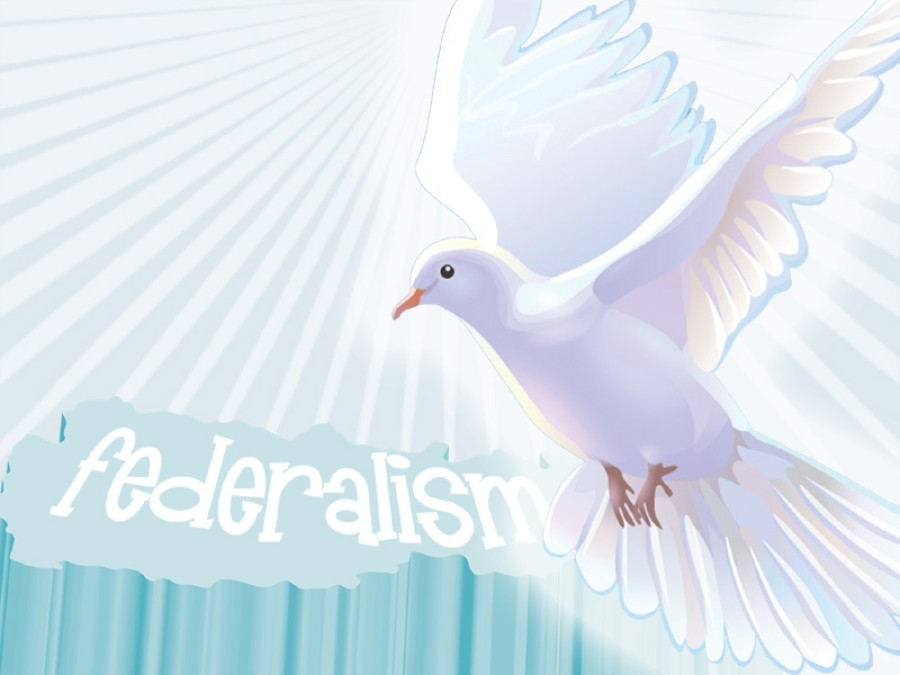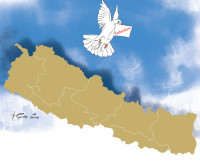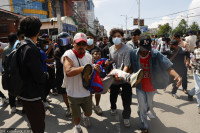Opinion
Waiting in anticipation
Socio-economic change, a key part of the peace process, is still a work in progress
Binayak Basnyat
The signing of the Comprehensive Peace Agreement (CPA) ending the 10-year Maoist conflict in 2006 led to post-conflict state building. The managerial challenges in the implementation of the CPA, and the social and political complexities that have emerged in the 10 years since then is of particular interest to intellectuals at home and abroad. The challenge of a repeated cycle of violence remains a primary concern among stakeholders.
Rising youth unemployment at home, earthquake reconstruction delays, controversies surrounding the new constitution, inter- and intra-party discontent and other political and social issues have remained in the way of peace-building in Nepal. Additionally, the effect of the ongoing peace process on socio-economic development is another dimension of Nepal’s peace process. These encounters pose decisive lessons to instigate a generation of peace industrialists across all spectrums of conflict, security and development around the world.
The positives
The larger underlying issue of the peace process which opened the door to the discourse of post-conflict state building in Nepal is the progressive realisation that conflict isn’t the answer to attempts to broaden Nepal’s polity and economic viability. A rebellion will never accomplish, and neither suit, the country’s movement towards a liberal political landscape in the post-Cold War era. A popular people’s movement, also known as democratic movement of Nepal or Jana Andolan II, accomplished in days what a 10-year-long violent struggle could not.
Another major fundamental of peace- building in Nepal is the mode of indeterminate leadership that the peace process influenced and upheld. The post-CPA political leadership has been engulfed in a vicious cycle of power struggle in the last decade. Nepal has seen nine political administrations headed by nine prime ministers representing 22 popular political parties in the last 10 years. This very popular data for analysis serves as an example of the kind of political-structural challenges a peace- building nation faces. It almost seems that shared power and communal leadership is the only way to preserve faith in the CPA and the peace process. An aggressive hold on power would have broken the state building alliance.
Here, regardless of the criticism drawn over instable government administration, superior conviction that the CPA and the peace process remained much greater than political power and administration gave way to the September 2015 promulgation of Nepal’s new constitution in a war-torn nation. As much as Nepal’s political parties and their philosophies varied from the very radical left to the conservative right, most of them chose to stay within a popular political system. Though the constitution remains controversial for various reasons, the document is a work in progress and does substantially incorporate political and social empowerment to foster better governance and suit a democratic landscape.
Good role model
Another leadership fundamental which often goes unnoticed is the acceptance of national reform and collective transition to peace during a crucial conflict-timeline. If the existing administration including the then Royal Nepal Army under an absolute monarchy had chosen not to step aside and compromise the political status quo, violence could have escalated dramatically. Only a few weeks after Jana Andolan II and the mainstreaming of all political factions to peace, king Gyanendra Shah agreed to step down and cleared the way for elections in 2006. Had the palace and the Army opposed the people’s movement at that time, the conflict would have prolonged. Crucial peace opportunities are a regular pattern in a conflict-timeline, and it’s important to seize these opportunities through compromise and understanding.
The actions that upheld Nepal’s peace process are key components of liberal peace building, such as the integration of the state and Maoist armies, the Constituent Assembly elections (both of them) and the formation of human rights bodies. They reflect political transition successes in Nepal. Reflecting on a decade of post-conflict state building and drawing lessons from Nepal’s peace process, it is important to note that the country has been able to exemplify a successful political transition to peace with, one, the mainstreaming of Maoist-rebel demands into a democratic process; two, the institutional compromise of the political status quo; and three, the conviction that national peace is superior to power and politics.
However, socio-economic transformation, a crucial part of the peace process, is still a work in progress in the Himalayan republic. Therefore, conflict driven countries that are grappling with various forms of state-based violence can take as an example Nepal’s progressive peace strategies only as far as political transition for peace is concerned. Nepal presents an inspiring scenario for the international community through its dynamic and rapidly changing political process, especially in the post-Cold War era where a radical leftist insurgent group has succeeded in accessing state power through an alliance with elite central and right-wing parties, a result of an extensive 21st century transition to peace which further projects accomplishments along with vibrant challenges.
Basnyat holds a Master’s degree in diplomacy and international studies




 9.12°C Kathmandu
9.12°C Kathmandu


.jpg&w=200&height=120)





%20(1).jpg&w=300&height=200)

